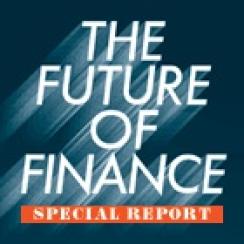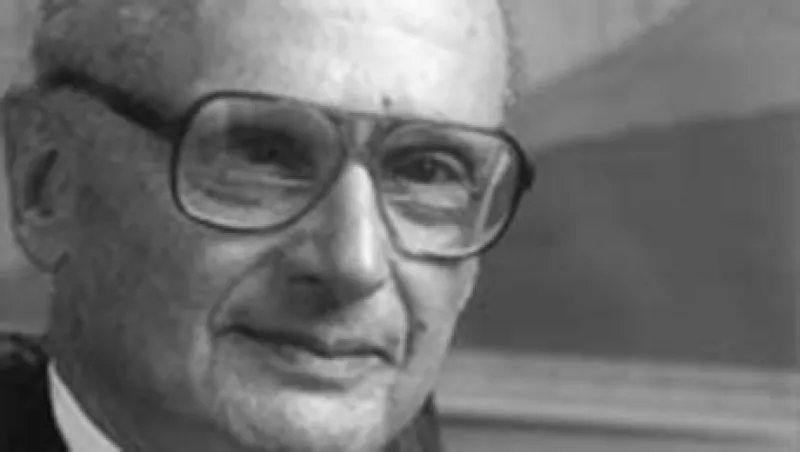
Markowitz, now 85, first presented a model of portfolio diversification to the world in a 1952 article in the Journal of Finance. His mean variance optimization model, used to construct an efficient portfolio, was also the thrust of his 1955 doctoral dissertation at the University of Chicago, where many of the modern-day, or “neoclassical,” financial theorists got their start. What is less well known about Markowitz is that his other 1952 paper, “The Utility of Wealth,” focused on behavioral biases in portfolio formation — laying the groundwork for psychologists Daniel Kahneman and Amos Tversky’s Prospect Theory over a decade later and the behavioral finance movement that followed. Seen as an outgrowth of dissension in the ranks, behavioral finance would be rejected by most neoclassical economists. Recently, however, thought leaders such as Yale University economics professor Robert Shiller have begun calling for interdisciplinary cooperation and greater creativity to advance finance theory.
Reached by phone in his San Diego office, Markowitz is modest about his paradigm-changing breakthrough. In addition to Shakespeare, he names inspirations like American economist John Burr Williams’s dissertation, “The Theory of Investment Value”; Russian mathematician James Victor Uspensky’s formula for the variance of a weighted sum of random variables; and Italian mathematician Bruno de Finetti’s work on a general portfolio selection model in the context of reinsurance.
Markowitz met William Sharpe in 1960. “I was not thinking about portfolio theory when a young man appeared in my doorway,” says Markowitz, then working on a computer language for the logistics department at the nonprofit research institute RAND Corp. in Santa Monica, California. Sharpe, who was also employed by RAND, was pursuing his Ph.D. in economics at the University of California, Los Angeles. UCLA finance professor J. Fred Weston, an admirer of Markowitz who as an editor at the Journal of Finance had facilitated the publication of “Portfolio Selection,” had suggested that Sharpe ask him for guidance on his dissertation. It was unusual for a nonacademic to advise a doctoral thesis, but the Markowitz-Sharpe relationship would prove exceptional.
Markowitz set Sharpe to work on a new model of covariance. Sharpe streamlined Markowitz’s portfolio analysis technique, creating a computer program that could analyze 2,000 securities at an extremely low cost, publishing his findings, “A Simplified Model for Portfolio Analysis,” in Management Science in January 1963. Next, Sharpe took his basic postulation that equity returns are related through common relationships to an underlying factor, the so-called single index model, and built it into the Capital Asset Pricing Model.
University of Chicago Booth School of Business finance professor Eugene Fama, known as the father of the Efficient Market Hypothesis, described CAPM as “the first precise definition of risk and how it drives return.” It blew the roof off the notion of active asset management with its startling finding that the stock market as a whole has the most efficient risk-return ratio, highlighting the difficulty in beating the market return. In an autobiographical 2011 paper, “My Life in Finance,” Fama recounted, “The arrival of CAPM was like the air clearing after a thunderstorm.” For decades, the Sharpe ratio — return per unit of risk — has been used to measure manager performance.
Fama recalls the disappointing quality of the finance curriculum at the University of Chicago business school when he began his graduate studies there in 1960. He gravitated to economics professors like Merton Miller, who became his mentor; Benoit Mandelbrot, who wrote about stock returns and their time-series properties; and statistician Harry Roberts, whom he terms his “North Star.” Massachusetts Institute of Technology–based Franco Modigliani, a frequent Chicago visitor in his collaboration with Miller, also influenced Fama, now 73. “They were all interested in the behavior of prices and returns,” Fama tells Institutional Investor. “They were all fumbling around for something to use, and that’s how the Efficient Market Hypothesis came about. My role was making it coherent.”
Fama believes that the Efficient Market Hypothesis is fairly well accepted by academics but, he says, “practitioners have never accepted it. They want to cling to the old inefficient market theory.” Compare index fund pioneer Vanguard Group’s fees to those of Fidelity Investments, he adds: “Active management pays.”
In the 1960s and ’70s, while economists at the University of Chicago and MIT focused on efficient markets and covariance matrices, cognitive psychology was gaining steam with advances into how the brain learns new skills and makes decisions. Two practitioners, Kahneman and Tversky, moved their research into the financial sphere in 1979 when they published “Prospect Theory: An Analysis of Decision under Risk.” Their theory offers an alternative to the traditional concept of utility theory, which states that rational individuals make economic decisions to maximize their expected utility. Under prospect theory, people make uneconomic choices as a result of risk aversion — investors will reject risky choices that don’t offer a potential reward. In 2002, Kahneman became the first psychologist to receive the Nobel prize in economic sciences (Tversky’s death in 1996 precluded him from sharing in the prize).
The first formal paper in behavioral finance was written by psychologist Paul Slovic in 1972 for the Journal of Finance, entitled, “Psychological Study of Human Judgment: Implications for Investment Decision Making.” In 1984 Santa Clara University professors Hersh Shefrin and Meir Statman published “Explaining Investor Preference for Cash Dividends” in the Journal of Financial Economics, on the “disposition effect” — explaining investors’ tendency to stubbornly hold winning stocks too long and sell losers too early because they are risk averse when they are winning and risk-seeking when faced with losses. Later that year Fischer Black, then president-elect of the American Finance Association, invited Shefrin and Statman to organize the first behavioral session at the organization’s annual meeting, where Richard Thaler and Werner DeBondt also presented their 1985 Journal of Finance paper on another behavioral phenomenon, overreaction. Their research found that stock price movements are not necessarily a function of market efficiency, but can be due to investors’ overreaction to recent news.
Yale’s Shiller had his behavioral epiphany in 1967, during a senior economics honors seminar at the University of Michigan when his professor, George Peterson, invited psychology professor George Katona, founder of the university’s Survey Research Center and its Consumer Confidence Survey, to speak. “I thought, here’s someone else who knows what I’m dissatisfied about in economics,” says Shiller, 66, who went on to get his Ph.D. in economics from MIT. “Katona was a behavioral economist, not in an economics department. But they had enough respect for him to bring him over to the economics department to speak.”
Shefrin points to earlier economists who until the mid-20th century had no qualms referring to psychological effects in explaining economic phenomena. As far back as 1759, classical economist Adam Smith described psychological explanations for individual behavior in his “The Theory of Moral Sentiments.” In 1936 British economist John Maynard Keynes notably referred to “animal spirits” to explain the emotional aspect of market behavior and used words like “optimism” and “confidence.” The next year Paul Samuelson, the first American to win the Nobel prize in economic sciences, anticipated behavioral aspects of saving in his “A Note on Measurement of Utility.” This paper foreshadows one written in 1981 by Shefrin and Thaler (now a professor of behavioral science and economics at the Booth School) called “An Economic Theory of Self-Control,” which suggested a psychology-based two-system framework to explain why people try to mitigate irrational behavior by imposing an element of outside control over their decisions. In his monograph “Behavioralizing Finance,” Shefrin described a host of behavioral explanations for irrational investing decisions, such as people’s tendency to try for “positively skewed returns” such as winning the lottery, casting them in opposition to the traditional understanding of mean variance efficiency.
Despite behavioral finance theory’s historical antecedents, the neoclassical camp continues for the most part to reject its ideas. “Something profound happened in the middle of the 20th century,” says Shefrin, 64. “Economists were stricken with physics envy. So they became very insular in that era. They thought if they put together a set of equations that could explain quantitatively how the world works like physicists could, they wouldn’t need to look outside to see what other social scientists have to say.”
One bright light might be Fama’s recommendation to include behavioral articles in the Journal of Finance, even though he doesn’t agree with them. And, although he ultimately chose the quantitative path, in both finance and operations research, Shakespearean student Markowitz would agree with Shiller about the need for economists to look outside their normal comfort zone. To keep new ideas coming, the octogenarian sets aside a half-hour each day to read textbooks on new topics. As Markowitz once confided to Shefrin, “I think of myself as the godfather of behavioral finance.”






